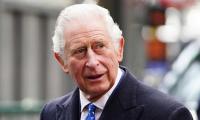The declining US influence in the Middle East has prompted the Trump administration to militarily intervene in the festering Syrian civil war. After the chemical attack in the Syrian town of Ghouta on August 21, 2013, the US had anxiously waited for a similar attack in Syria to provide a legitimate cause for its direct military intervention against the Assad regime.
The recent chemical attack in Khan Sheikhoun in Idlib has provided a cover to the US to employ firepower against the Assad regime in Syria. All this is designed to outsmart Russia and foster the security of Israel in the oil-rich region.
Without any impartial investigation, the US has made the Assad regime responsible for the deadly chemical attack. According to Russia’s defence ministry, the Syrian warplanes pounded a large terrorist depot and a concentration of military hardware in the eastern outskirts of Khan Sheikhoun. The attack dispersed the lethal chemicals in the air, suffocating a large number of people near the epicentre of the attack.
The US launched 59 Tomahawk cruise missiles against the Al Shayrat air base in Homs from the destroyers – the USS Porter and the USS Ross, which are currently stationed in the eastern Mediterranean. Some early reports indicate that the airfield’s planes and support infrastructure were severely damaged or destroyed.
What should not be forgotten is that the direct US military intervention in Syria is not an attempt to protect the suffering Syrian people from the continued oppression of the brutal Assad regime and ragtag terrorist outfits. Nor does the US sincerely aspire to see democratic norms flourishing in Syria. Washington’s main target is to dethrone Russian regional client – the Assad regime – and subsequently replace it with an American puppet.
The US has a long list of military and economic objectives to maximise after ousting President Assad from the strategically important Syria. First and foremost, due to the US’s stunning failure to end the simmering civil wars in Syria and Yemen, Washington’s major regional allies have slowly started tilting towards China and Russia. The Saudi king’s recent visit to China is a major case in point.
The US sells arms and warfare technology worth billions of dollars to some Arab monarchies. More importantly, the Chinese display of military power in the South China Sea and the Russian application of modern aircraft in Syria and Crimea have attracted some Arab countries to purchase weapons from these two countries. During his visit to China, King Salman of Saudi Arabia signed a deal with Beijing to set up a factory in the kingdom to produce Chinese hunter-killer aerial drones.
The US seems to have decided to employ firepower against the Assad regime so that Washington’s major regional arms importer will not fully jump on the Chinese and Russian bandwagon. US missile attacks against the Assad forces will not only advertise its modern weaponry, they will also assure Arab countries that Washington can militarily intervene in the Middle East to safeguard the core strategic interests of its regional allies.
The Assad regime has provided Russia the Tartus naval facility and the Khmeimin air base. These bases have immensely helped Russia continue its annexation of Crimea and increase its naval presence in the eastern Mediterranean Sea. The US recourse to missile attacks stems from the fact that Western-funded rebels have proved ineffective to oust Assad from power.
Despite Turkey’s resistance, the US has continued to provide military hardware to Kurdish fighters against Daesh in Syria. The Turkish government is fearful that the US will use the Kurds of Iraq, Syria and Turkey to carve out an independent Kurdish state in the region in the future.
The hostile attitude of the US towards Turkey has made the latter reset its fractured relations with Russia. Both Russia and Turkey are currently sharing intelligence information and coordinating with each other against Daesh in Syria. More importantly, Turkey has lately shown its interest in purchasing advanced S-400 air and missile defence systems from Russia. Such Russian missile technology will help Turkey get rid of the Nato-deployed missiles on Turkish soil.
The US is aware that Russia will capitalise on its partnership with Turkey to augment its naval and military presence in the Mediterranean Sea and Eastern Europe. If Moscow succeeds in bringing Ankara under its regional fold, the US will lose its most powerful Nato partner in the region. To prevent Turkey from jumping into Russian bandwagon, the US will find more pretexts to organise aerial attacks against the Assad regime. Besides, Washington will slowly keep itself aloof from Kurdish fighters in Syria in a bid to appease Turkey.
The Trump administration is also concerned about the increasing support of Hamas, Iran and Hezbollah to the embattled Assad regime. If President Assad remains in power for a long time, this will probably help Iran forge a strong regional bloc with Hamas, Syria and Hezbollah against Israel.
Arguably, President Trump requires Israel’s support to shape public opinions for his domestic and foreign policies. Therefore, the Trump administration has decided to inhibit the unfolding Iranian-sponsored alliance against Israel by further weakening the Assad regime in Syria. The latest missile attacks were designed to strengthen the position of rebels against the Assad government in the raging civil war.
When the US launched the missile attacks against Syria, President Trump was hosting Chinese President Xi Jinping at his Mar-a-Lago estate in Florida. China is the major diplomatic, military and economic supporter of the North Korean regime that has constantly threatened the US and South Korea with nuclear attacks. Through these missile attack against the Assad regime, the US has presumably indicated to China that it can resort to limited attacks which are geared towards neutralising the nuclear threat posed by North Korea.
Since Syria is the only regional country hosting some Russian naval and military bases, Moscow will employ all possible means to militarily protect the Assad regime from the US and the ragtag rebels.
Russian military support to Assad is likely to further increase the divergences between Russia and the US in terms of bringing a lasting end to the Syrian war. The helpless Syrians will, therefore, continue to reel from the brutalities of the Assad regime and insurgent groups.
The writer is an independent researcher.
Email: ayazahmed6666@gmail.com
Twitter: @ayazahmed66665
Invention of Bakelite by Belgian chemist Leo Baekeland in 1907 marked beginning of large-scale plastic production
It was found that at least 60% of answers given by AI were inaccurate or blatantly incorrect
Apple and other manufacturing giants face skyrocketing costs as their China-based supply chains get taxed into oblivion
Pakistani mills buy American cotton, turn it into products, and sell those goods back to American consumers
Senior Pakistani delegation is scheduled to visit Washington for trade and tariff negotiations
Sialkot’s products meet stringent international quality standards, ensuring reliability and safety in medical...







